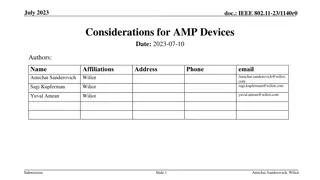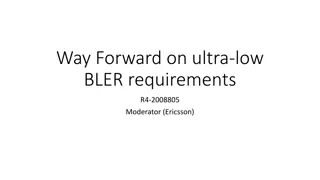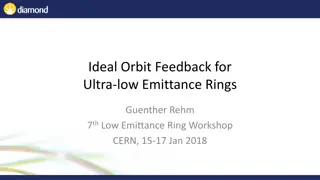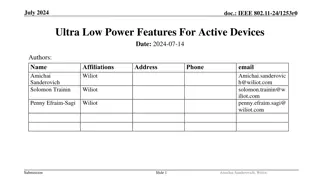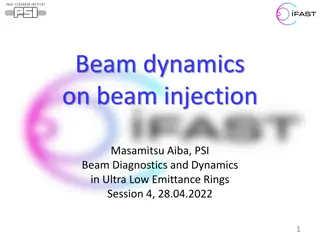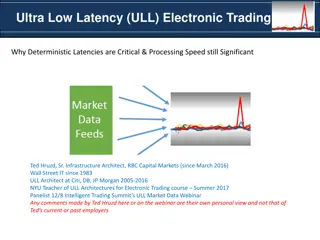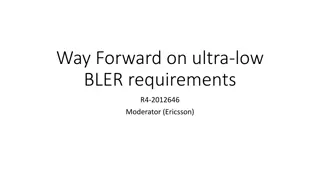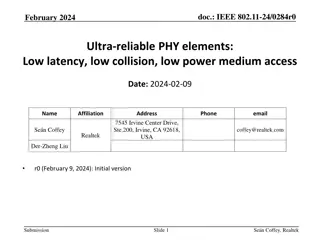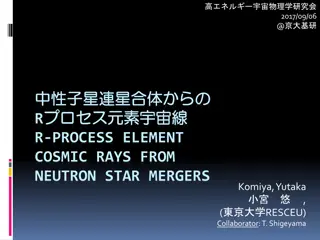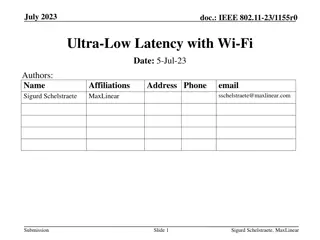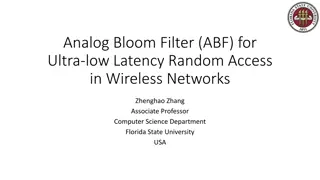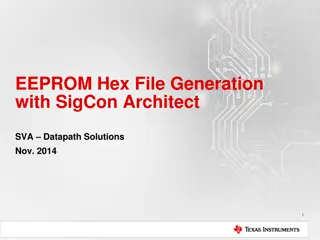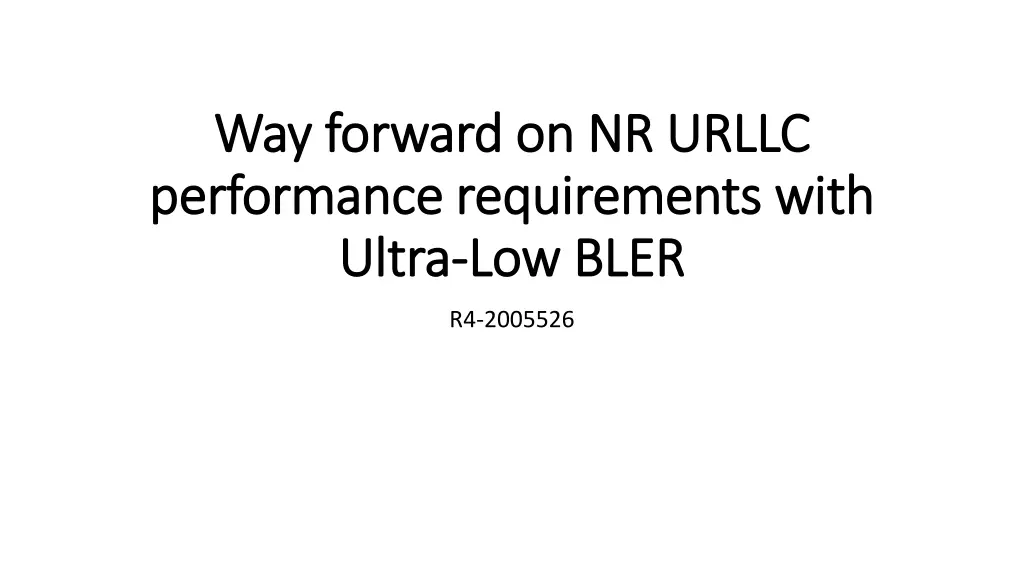
Performance Requirements in NR URLLC
Explore the performance requirements and agreements for Ultra-Low BLER in NR URLLC, including decisions on DM-RS configurations, UE and BS requirements, PUSCH bandwidth, open issues on TDD patterns, and CQI requirements. Stay informed to enhance testing efficiency and accuracy in FR1.
Download Presentation

Please find below an Image/Link to download the presentation.
The content on the website is provided AS IS for your information and personal use only. It may not be sold, licensed, or shared on other websites without obtaining consent from the author. If you encounter any issues during the download, it is possible that the publisher has removed the file from their server.
You are allowed to download the files provided on this website for personal or commercial use, subject to the condition that they are used lawfully. All files are the property of their respective owners.
The content on the website is provided AS IS for your information and personal use only. It may not be sold, licensed, or shared on other websites without obtaining consent from the author.
E N D
Presentation Transcript
Way forward on NR URLLC Way forward on NR URLLC performance requirements with performance requirements with Ultra Ultra- -Low BLER Low BLER R4-2005526
Agreements from 1stround No slot aggregation for the ultra-low BLER requirement CP-OFDM waveform only UE DM-RS configuration is 1+1. Reconfirm or revise this decision in case the decision for DM-RS configuration for the slot aggregation requirement differs. BS DM-RS configuration is 1+1. Reconfirm or revise this decision in case the decision for DM-RS configuration for the slot aggregation requirement differs. These agreements apply for FR1 only. Further investigate and confirm UE MCS. MCS13 is baseline but a different MCS could be agreed if better. Regarding number of UE requirements: It is not of importance to agree a number; rather agree the number of different scenarios and the number of requirements will fall out. Note that currently it appears to be 4 for PDSCH plus potentially CQI, but this depends on final set of scenarios. Regarding number of BS requirements: It is not of importance to agree a number; rather agree the number of different scenarios and the number of requirements will fall out. Note that currently 2 SCS and 2 mapping type are agreed; this number could change depending on agreements (There can be applicability rules to reduce testing of course).
Agreements from 2ndround PUSCH bandwidth and number of RB Same as agreed for the slot aggregation (high BLER) requirement Value for X Companies simulate X needed for 10^-6 and optionally 10^-7, and bring results on X and expected test time
Open issues BS TDD pattern Option 1: 3D1S1U (S=10:2:2) for 15 KHz, 7D1S2U (S=6:4:4) for 30 KHz Option 2: DSUU Number of UE tests Option 1: 1 Option 2: 2 Number of BS tests Option 1: 1 using applicability rule Option 2: 4
Open issues Create CQI requirements for ultra-low BLER Option 1: Create ultra-low BLER CQI requirements Option 2: Do not create ultra-low BLER CQI requirements If CQI requirements defined, create applicability rule between CQI and FMCS Option 1: Yes Option 2: No FR2 requirements for ultra-low BLER Option 1: Create FR2 requirements and tests for ultra-low BLER Option 2: Do not create FR2 requirements and tests for ultra-low BLER



